1. Introduction
Recording music at home has never been more accessible. Between affordable gear, powerful software, and endless online tutorials, it’s easy to get started, but there’s a world of difference between simply capturing sound and producing recordings that stand up to professional work. The good news? You don’t need a million-dollar studio to get there.
This guide is all about bridging that gap. We’ll cut through the noise and focus on practical, budget-conscious techniques that make the most of the space, gear, and skills you already have. Along the way, we’ll help you strike the balance between trusting your ears and understanding the proven techniques that make those ears more effective. Whether you’re tracking a full drum kit, laying down guitar riffs, or capturing an intimate vocal, the tips here will help you elevate your recordings from “decent demo” to “release-ready.”
By the end, you’ll have a clear roadmap for achieving pro-level results, all without leaving your home.
Recommended Reading
Essential starting points for better recording and production.
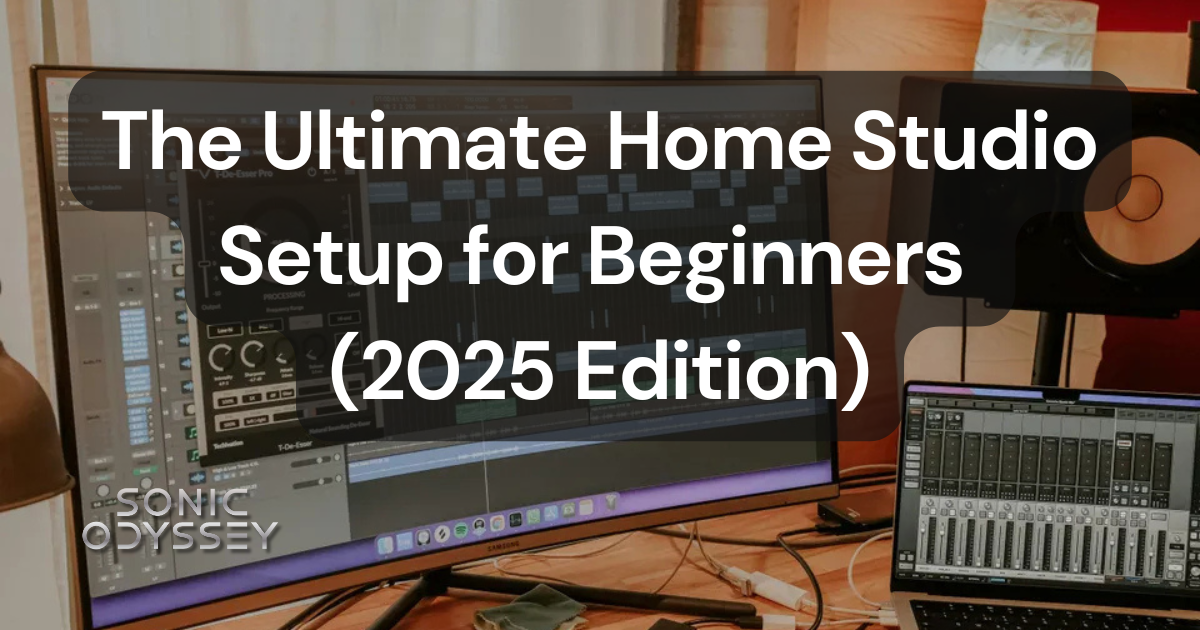
New to home recording? This guide walks you through gear, software, and setup tips to get started right.
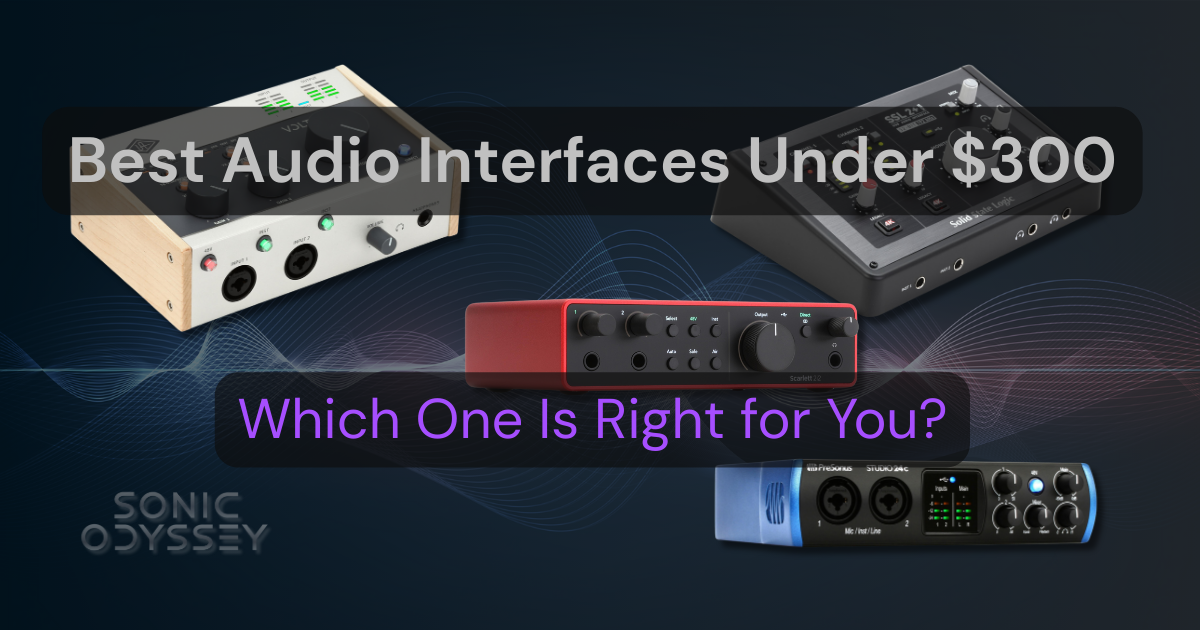
The best budget audio interfaces of 2025, tested and reviewed.
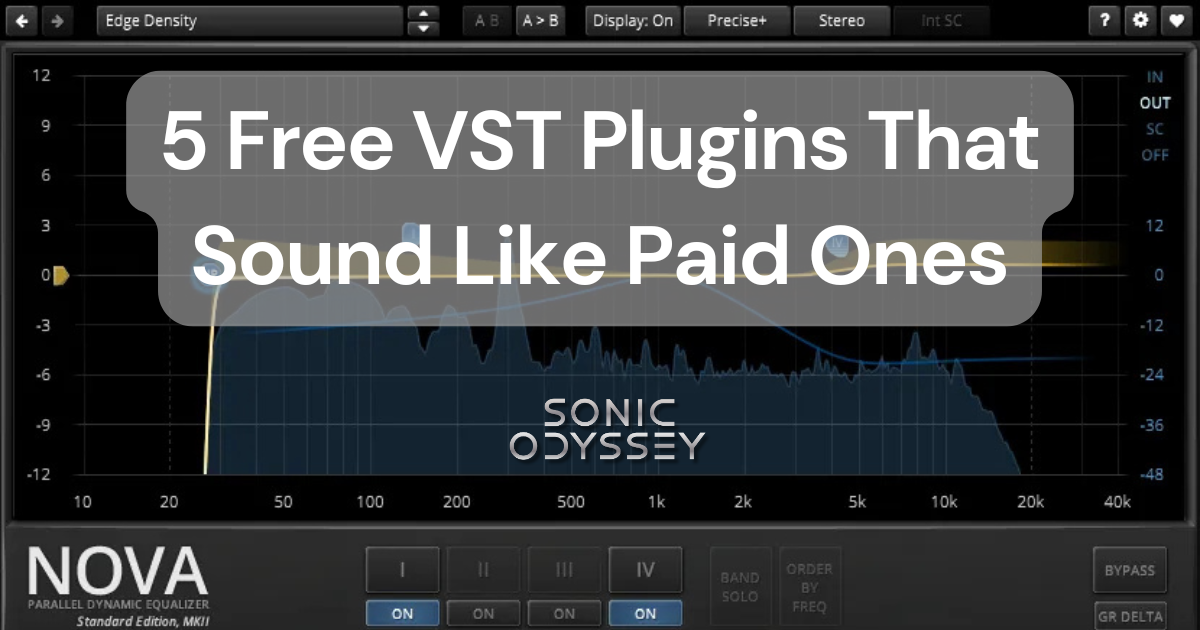
5 Best Free VST Plugins That Sound Like Paid Options.
2. Setting the Stage: The Room Matters
The space you record in will shape the sound more than almost any piece of gear you own. A great performance in a good-sounding room will beat a mediocre performance in a heavily “treated” but poorly designed space every time. I’ve made fantastic-sounding tracks in completely untreated living rooms and gotten terrible results in over-deadened jam spaces stuffed with cheap foam. Don’t underestimate what a few well-placed acoustic panels can do — I added a pair of ceiling clouds in my main studio room and it completely transformed how vocals sound, bringing clarity, removing mud, and revealing an airy quality that helps them cut through the mix without killing the natural liveliness of the space. That single change also altered which microphones I reached for and how I dialed in my preamps, because the room’s improved response made certain mic and preamp combinations shine in ways they hadn’t before.
- Why it matters: The room interacts with your instruments and microphones, adding reflections, resonance, and tone shaping. Some of that is desirable, some isn’t.
- Smart treatment: Focus on controlling low-end buildup and flutter echoes first. Bass traps, heavy curtains, and strategically placed absorbers can go a long way.
- Avoid the over-dead zone: Killing all reflections can make recordings sound lifeless and unnatural. Aim for a balance.
- Positioning: Where you place your instrument and microphone in the room can be just as impactful as the treatment itself.
- Isolation vs. ambiance: Sometimes you want the room sound (e.g., drum overheads), sometimes you want it gone (e.g., intimate vocals).
3. Gear Essentials
Gear matters. That doesn’t mean you need the most expensive boutique gear on the market, but it does mean you need the right gear for the job, in good working condition, and that you actually know how to use. A modest, well-chosen signal chain in the hands of someone who understands it will outperform a rack of high-end gear used improperly every time. Never skimp on cables — cheap, noisy ones will ruin even the best signal chain — and avoid bargain-bin microphones that look flashy but sound terrible. An SM57 will serve you far better than a “limited edition” MXL condenser with a pointless blue LED.
- Audio interface: Choose one with the right number of inputs, outputs, and quality of preamps for your needs. Low latency and reliable drivers are key.
- Microphones: Learn the strengths of dynamic, condenser, and ribbon mics. Match the mic to the source and application rather than assuming one-size-fits-all.
- Accessories: Invest in rugged, well-shielded cables, sturdy stands that won’t droop mid-take, and quality pop filters to prevent plosives.
- Monitoring: Understand when to use headphones for isolation vs. studio monitors for accurate mixing decisions.
- Maintenance: Clean connectors, check cables for noise or shorts, and keep mics and gear stored properly to avoid damage.
4. Microphone Placement 101
This is where technique and trusting your ears collide. You need your ears to tell you when something is off about mic placement, but you also need the fundamentals to know how to fix it before it becomes a “fix it in the mix” problem. The goal is to capture the right sound at the source, not to salvage it later.
I personally love boutique gear — I own some very high-end mic pres — but if I have no clue where to place a mic on a guitar cab or in front of a vocalist, all I’ve got is an expensive box of tubes and transformers doing very little. Understanding the relationship between mic choice, placement, and the source is what turns good gear into great recordings.
- The golden rule: Mic placement is more important than mic price. Experiment with distance, angle, and position relative to the source before blaming the gear.
- Close-miking vs. room-miking: Close-miking offers clarity and isolation, often with an increased low-frequency response due to the proximity effect, while room-miking captures the natural ambience of the space. Be mindful of how proximity effect can add warmth or muddiness depending on mic type and placement. Room-miking can also introduce other issues such as phase alignment problems, especially with multi-mic setups like drums, which can lead to comb filtering or a thin sound if not addressed. Decide on approach based on the role the instrument plays in the mix and the tonal balance you want.
- Common setups:
- Guitar amps: Start with the mic aimed at the edge of the dust cap, adjust toward the center for brightness or toward the cone for warmth.
- Acoustic guitar: Try placing a small-diaphragm condenser around the 12th fret, angled toward the sound hole for a balanced tone.
- Vocals: Keep consistent distance, use a pop filter, and adjust height and angle to minimize sibilance.
- Drums: Overheads for stereo image, close mics for definition, and consider phase alignment with multi-mic setups.
- Keyboards: Often best captured direct, but mic a cabinet or Leslie for added character.
- Phase considerations: When using multiple mics, listen in mono to check for cancellations and adjust placement or polarity accordingly.
- Stereo techniques: Experiment with XY, ORTF, or spaced pairs for a wider image without losing focus.
5. Gain Staging and Signal Flow
In the all-digital, in-the-box era, the art of gain staging has been largely forgotten — and far too many YouTube “recording guides” put that on full display. Proper gain staging isn’t just a relic from the analog days; it’s essential for clean, punchy, and mix-ready tracks.
- Setting proper input gain: Aim for healthy levels that avoid clipping while leaving headroom for peaks. In digital recording, -12 to -6 dBFS on peaks is a safe target. When recording at 24- or 32-bit, you don’t need to run signals as hot as possible. Give yourself ample headroom — aiming for around -9 dB on a standard Pro Tools VU meter is a solid starting point. Instruments with sharp transients, like bass or drums, will naturally exceed this, so focus on avoiding clipping rather than forcing them down.
- Avoiding clipping and noise: Too hot and you’ll clip; too low and you’ll amplify noise later. Find the sweet spot.
- Understanding the signal chain: Know every gain stage from instrument to DAW — instrument output, preamp gain, interface trim, and DAW input levels.
- Consistency: Keep levels consistent between takes to make mixing easier and avoid surprises.
- Using DI and re-amping for flexibility: Track a clean DI alongside a processed signal to allow tone changes later without sacrificing performance.
- Monitor with intent: Listen for distortion, hiss, or tonal changes as you adjust gain, not just meter levels.
- Analog sweet spots: Many analog preamps, compressors, and EQs have a “sweet spot” where they perform their best. Learning where that is takes time, experimentation, and critical listening — and hitting that zone can add depth and character that no plugin can replicate.
6. Recording Tips by Instrument
Guitar & Bass
- Always capture a clean DI track alongside your mic’d or amp signal. This gives you flexibility for reamping or blending tones later.
- Keep the DI free of hum and ground noise — you’ll thank yourself in the mix.
Drums
- Your mic setup should match the style. For tight, heavy music, close-mic everything and keep room sound minimal.
- For rock, lean into room mics to add size and vibe.
- Live or jam-style sessions can sound great with just two overheads, a kick, and a snare mic.
- Always check phase relationships, especially when combining close mics with room mics.
Vocals
- The singer’s technique is critical. You may have to live with imperfect takes if the performer’s mic control or consistency isn’t there — you’re not fixing that mid-session.
- Use placement, pop filters, and subtle compression to manage plosives and dynamics, but don’t expect miracles from gear alone.
Keys & Synths
- If the instrument supports it, record both the audio output and a MIDI performance. This gives you options for sound replacement, layering, or re-voicing later.
Other Instruments
- For acoustic guitar, pointing the mic at the 12th fret usually gives a more balanced tone than miking the sound hole, which tends to be boomy.
- Experiment with mic angle and distance to suit the instrument and room.
7. Tracking for the Mix
When you’re recording, you’re not just capturing performances; you’re laying the foundation for the mix. Every choice you make now either saves you time later or locks you into problems you’ll have to fight in post.
- Think Ahead – Ask yourself what the final arrangement will sound like. Leave space in your recordings for other instruments instead of filling every frequency range. A dense rhythm guitar tone that sounds huge in isolation can turn into a muddy mess once the bass, keys, and drums are in.
- Commit Where It Counts – Effects like compression or EQ during tracking can work in your favor if you know exactly what you want. Just be sure you’re not painting yourself into a corner.
- Performance Over Perfection – A great performance with minor imperfections will mix better than a lifeless “perfect” take. Capture the energy and intent — you can nudge timing and pitch later if needed, but you can’t fake vibe.
- Reference While You Record – Soloed tracks can be deceptive. Check how they sit with the rest of the mix as you go to avoid surprises later.
- Don’t Crowd the Low End – Too many low-frequency elements can destroy clarity. Decide early which instruments will own the sub and bass ranges.
- Leave Headroom – Keep your levels healthy but not hot. A clean, unclipped signal with -6 to -9 dB of headroom gives your mix engineer (or future you) breathing room.
If you treat tracking as the first step of mixing, you’ll find yourself making fewer “fix it in the mix” compromises and spending more time polishing a great recording instead of salvaging a bad one.
8. Common Mistakes to Avoid
Some of these will sound familiar; that’s intentional. They’re important enough to repeat, and worth keeping at the front of your mind whenever you hit record. Forgetting even one can derail an otherwise great session.
- Recording Too Hot – Modern 24- or 32-bit recording gives you plenty of headroom. Slamming your inputs risks digital clipping, which is unforgiving. Aim for healthy levels — not brick walls.
- Ignoring Room Acoustics – The best mic in the world can’t save you from a bad-sounding room. Treat reflections, tame flutter echoes, and consider temporary solutions (gobos, blankets) if a proper treatment isn’t possible.
- Over-Processing During Tracking – It’s tempting to EQ, compress, and add effects to “get it right at the source,” but too much commitment early can paint you into a corner. Keep processing subtle unless you know it’s exactly what you want.
- Not Checking Phase Alignment – Multi-mic setups (like drums, guitar cabs, or stereo instruments) are prone to phase issues. Check polarity and alignment regularly. Phase problems can gut your tone before you even hit mixdown.
9. Next Steps: From Recording to Polished Mix
Once your tracks are recorded, the journey’s far from over. The transition from raw takes to a polished mix involves organization, refinement, and careful decision-making.
- Editing & Comping – Sort through multiple takes and assemble the best performances into a single, seamless track. Remove unwanted noise, tighten timing issues, and fix glaring pitch problems (if needed).
- Basic Mixing – Before diving into heavy processing, set good static balances and panning. Address any problem frequencies with light EQ, control dynamics with tasteful compression, and create space with reverb or delay as needed.
- Export & Prep for Mastering – When your mix is complete, export at the project’s native bit depth and sample rate (usually 24-bit/48kHz or higher) with enough headroom for mastering (-6 dBFS is a safe target). Avoid limiting or over-compressing at this stage — mastering engineers need room to work.
Mastering Handoff Checklist:
- ✅ All tracks labeled and organized in the DAW.
- ✅ Final stereo mix exported at native bit depth/sample rate (no dithering yet).
- ✅ Peak level around -6 dBFS, no limiting on the master bus.
- ✅ No clipped transients or overs.
- ✅ Fade-ins/outs applied as intended.
- ✅ Notes provided for the mastering engineer (reference tracks, sonic goals, any problem areas).
- 🚫 Do NOT normalize your mix before sending to mastering. This destroys your gain staging and can leave your engineer with less room to work effectively.
10. Conclusion
Great recordings don’t happen by accident — they’re the product of solid preparation, refined technique, and a willingness to really listen with a critical ear. Every decision, from mic choice to performance capture, builds the foundation for the mix that follows.
Don’t be afraid to experiment. Rules and best practices exist for a reason, but sometimes the best results come from breaking them with intent. Try unconventional mic placements, push a performer into a different emotional space, or blend unexpected sound sources — as long as you’re making those choices consciously, you’re growing as an engineer.
If you’re ready to dig deeper, explore Sonic Odyssey’s other resources for more in-depth guides, gear reviews, and technique breakdowns. The more you learn, the more tools you’ll have to capture music that not only sounds good, but feels alive.
Explore More from Sonic Odyssey
Take your skills further with these guides and gear picks.
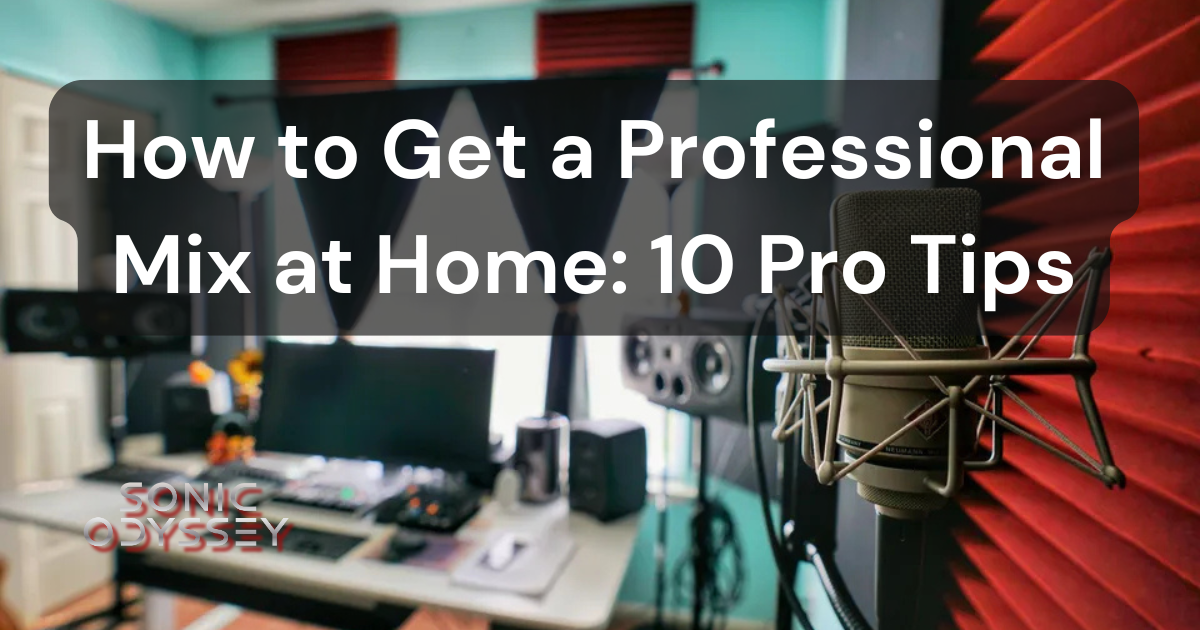
Want a professional-quality mix from your home studio? These tips will get you there.
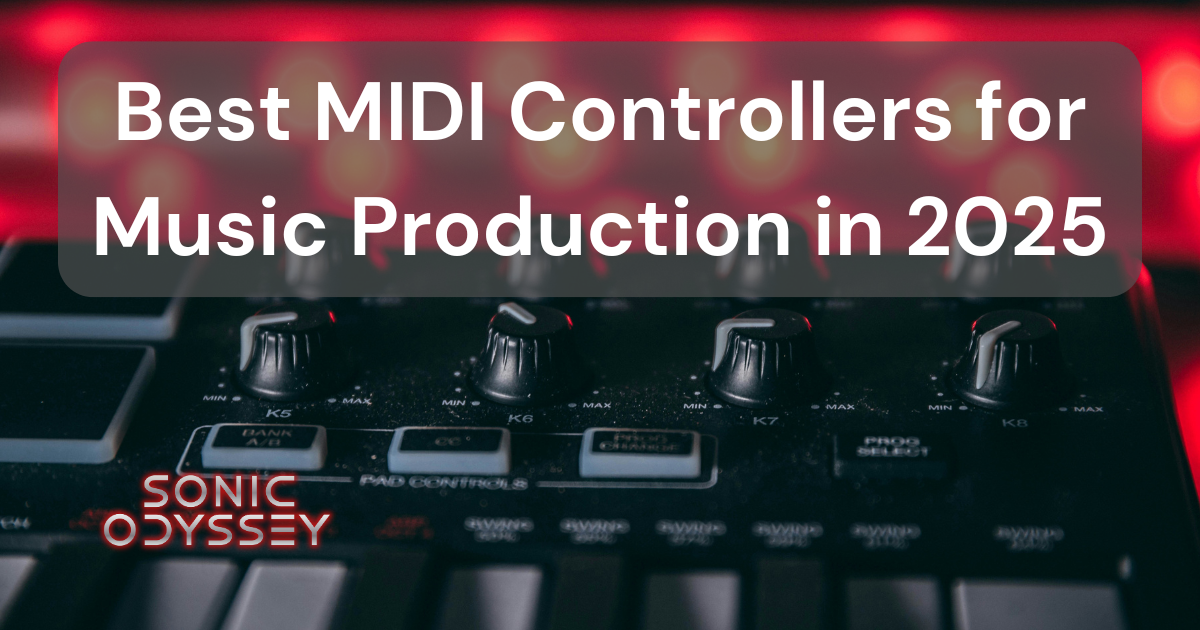
Explore the best MIDI controllers for music production, from budget to pro.












